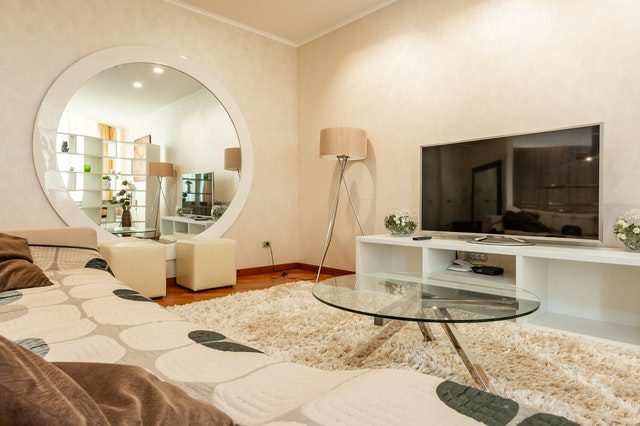
How to choose the right rug for any room
Elegant and refined or graphic and vibrant, a well-chosen rug has the potential to set an inviting scene. And so much more.
Injecting a distinctive sense of style and comfort while delineating and anchoring a space, a rug should be anything but a decorative afterthought. This often-undervalued styling tool has the power to transform a room, magically allowing a space to appear larger, quieter and eminently more inviting.
A rug can also act as the vehicle to unveil a luscious colour and material palette. Or perhaps it may provide the all-important final flourish, pulling together a room with quiet aplomb.
But what should be taken into account when searching for the ideal rug? Take time to consider these key factors – size, shape and texture.
Start with size
The rule of thumb for a rug in a living room is bigger is better.
Dimensions are the first consideration when selecting a rug for a particular zone. And the rule of thumb for a rug in a living room, says Picchio Interiors principal designer Anna Wood, is bigger is better.
“Ideally, a rug will fit all of the key pieces of living-room furniture on top of it, without running from wall to wall,” says Wood. “If this isn’t possible, then at least the front legs of the sofa or armchairs need to sit on the rug. This guideline ensures that the rug brings the room together and defines the space as a zone with a particular purpose.”
A correctly proportioned rug can perform an equally effective role underneath a dining table.
“Here, the size needs to be at least one metre larger than the table on all sides so that the dining chairs can be pulled out without tripping on the edge of the rug,” says Wood.
On the other hand, a more petite rug can reap major style dividends in a sleeping zone.
“A smaller rug looks great placed at the three-quarter mark of the bed,” says Wood.
Select the shape
Consider the shape of the room when it comes to choosing the shape of a rug.
When determining the correct shape of a rug, the shape of the room itself should come into consideration.
“If the room is structured, then a rectangular or square-shaped rug works well,” Lauren Mahoney, creative director and founder of Studio Trio, says. “However, if the room is an octagon shape or has curved walls, then you can really play with shape. Consider the architecture of the room, and what the walls and the furniture are ‘doing’, and try to work these elements in.”
It’s an ethos shared by Chris Rak, principal interior architect for Robson Rak Architects & Interior Designers. Rak points out that a rug should appear at one with its surroundings. “It needs to feel like a best friend to a room,” he says. “There’s a fine line between the furniture integrating with the rug and competing with it.”
Materials matter
Be clear about the purpose of a room when choosing the texture of a rug.
Will the piece sit in a heavy-traffic zone and therefore be made to last – perhaps in a hardy wool blend or a robust natural fibre like sisal?
Or is the space a designated chill-out domain, justifying a thicker, plusher-pile rug that feels ultra-soft underfoot?
“Silk rugs or silk-wool blends can also be absolutely stunning, are luxuriously soft to touch and make a huge visual impact in a space. However, they are more delicate,” Wood says. “They are best in lower-traffic areas, such as a formal lounge room, as they can be hard to treat in terms of stain removal.”
Of course, a rug can be an opportunity to marshal colour and pattern to meaningful effect, too.
“A patterned rug can co-exist with other patterns in the room as long as it is not overdone,” Wood says. “The eye needs somewhere to rest. If the rug is being purchased to fit in with existing pieces, then the style would take its cue from the surrounds.”
Patterns should be used to inspire and uplift, Rak says, giving the example that “a great entrance rug can set the mood upon entry”.
So, immerse yourself in the hunt for the perfect rug, one that will play a key role in a beautiful and purposeful space.
Source: domain.com.au/living